The Venetian streets I walk each day are paved in 300-year old herringbone pattern bricks that, despite bearing countless millions of footsteps each year, provide an enduring pavement. The houses are old and disintegrating on the outside, yet peeking through widows reveals modern interiors that have been painstakingly and lovingly restored. Of the 56 churches listed in my guide to Venice (there are more – the guide lists only the major sites), not a single one is less than 200 years old and many date back to the 9th or 10th centuries. History wells up between these paving stones. It oozes through the cracks in the crumbling bricks of these ancient houses and saturates the inner sanctums of every Venetian church. I find this somehow comforting, as if this history connects all humanity through time and space. In the United States we think a house is obsolete if it more than 20 years old. We tear down old buildings without a second thought for their history and the sense of place that is lost once the building is destroyed. We are so caught up in the modern, the new, and the need to achieve that we sometimes lose sight of what is important. So, to honor that palpable sense of history that permeates Venice, I provide the following photo tour of just a few of the historical sites of Venice:

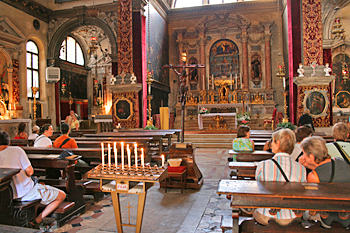
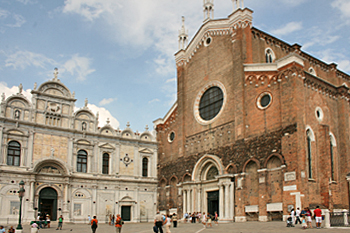
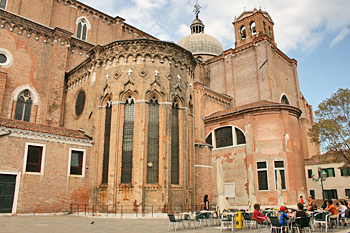

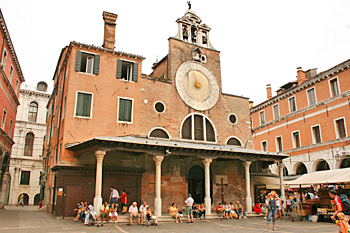
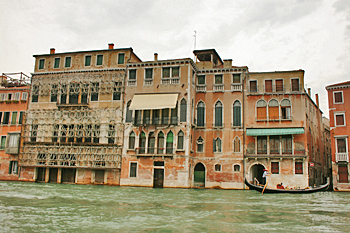
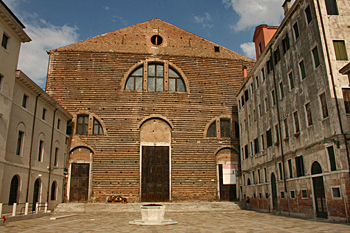
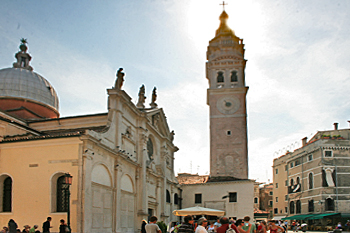


And last but not least, Campo San Cancione Church, which is shown as it looks today at the top, and at the bottom as it looked in the late 1800’s, here captured by the famous American landscape and portrait painter, John Singer Sargent. I feel fortunate to have seen this painting in person while here in Venice, because the Art Museum has arranged a retrospective of his works, many of which are in private collections and may never again be seen in public forums. What is most remarkable is that the square has not changed at all since Sargent painted it! I stood on the exact spot from where he painted and gazed at the scene before me. The old city well is still there in the center of the square. The arches, the pillars, and the shutters are all the same, more than 200 years later. Even the walls are painted the same color ad the very same stains streak the walls beneath the windows! It was eerie and fascinating at the same time, and I can easily understand why seeing this particular painting and then standing at the square where it was painted is considered to be a sort of “holy grail” for artists:
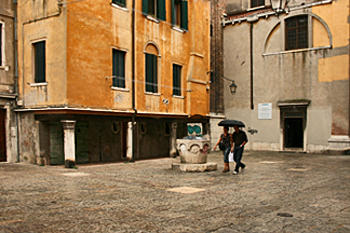
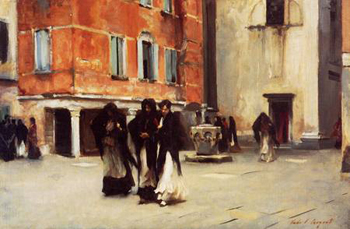
If you plan to visit Venice (and I heartily recommend it), you may want to consider staying at Casa Cosmo. I chose it because of its location on a quiet lane (as quiet as it ever gets in Venice) about three minutes from St. Mark’s Plaza. It has clean, modern, spacious rooms for about $60 Euro per night – a bargain in Italy! Included in the price is a continental breakfast that is delivered to your room each morning, free wireless internet connection for your laptop, and the wealth of information available from Davide, who works the front desk, and his parents, the owners.
Early tomorrow morning I travel to Rome where, I am quite sure, I will continue to be awestruck by culture and history.

I’ve been in Venice for the past week Barbara, staying in a quiet little area near Campo San Lorenzo. I’d have missed Marco Polo’s house if I hadn’t stopped by your blog. I’m off to get photos this morning 🙂
Hi Tracey! Loved your comment. I always am thrilled when I read that I was helpful with travels. Thanks for letting me know.